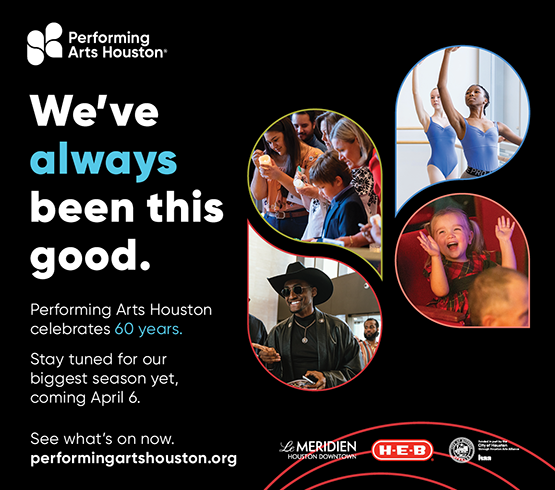Nastassja Swift’s primary mode of artmaking in recent years has been needle felting—a form of textile production that renders wool into saturated, light-absorbing forms. Her dolls, figures, and tapestries of tiny faces are equal parts comforting and unsettling. But the artist’s latest piece—her most personal to date—shattered even Swift’s own assumptions about where her work was heading.
The installation and its component parts make up a kind of psychic transportation device, a way for the artist to place herself in her brother’s environs—if only in spirit. Swift explains that she wanted to “frame it as a collaboration, making work with him even through this distant relationship.” Their joint project will be on view at the Galveston Arts Center through October 3, with a performance scheduled on Sept. 25th.
Swift’s exhibition is made possible through a grant from the Black Box Foundation known as the Art as Activism Grant, which brings art about pressing social issues to the public. A simultaneous exhibition featuring work by Rashaun Rucker, also a grantee, will run concurrently at the Art League in Houston.
Canaan himself is not an artist of the visual sort. “His heart is in the culinary arts. He would send me and my mom recipes and ask us to cook it, plate it, and photograph it,” Swift explains. But at the heart of the quilt is a replica of his prayer rug, recreated using a painstaking drawing he made. His sister was surprised. “When he sent me that drawing of his rug it was so detailed,” she says. “He was very purposeful. It [the drawing] is framed and it’s part of the show.” Swift spent several months sourcing the fabrics for the quilt from local second-hand shops, “trying to find things that mirrored feelings,” she says.
A closeup view reveals the subtle shades of gray, blue and maroon that give the figures form. “It felt like paint,” says the artist. The details of faces and clothes are so lushly realized that Swift has received several requests for the pants that her brother wears in his contemporary portrait, but “I’m not a fashion designer,” the artist laughs.
If this exhibition has an unviewable element, an aesthetic ghost that haunts the four invisible walls of the cell, that ghost is time. It’s in the sentence itself, which was given to Canaan but also to his family and friends in the form of his absence. “I’m living the prison life, I’m not living my best life,” Canaan says in a recording of one of their phone calls.

1 ⁄7
Nastassja Swift
Security Blanket, 2021
Mixed textiles, glass beads, batting, and steel frame
Quilt 5’ x 46’
Frame 6.5 x 10 x 11 shoes wide, high, and long
The dimensions of the frame are that of Canaan’s current cell, measured by his shoes.
All works are courtesy of the artist.

2 ⁄7
Nastassja Swift
Security Blanket, 2021
Mixed textiles, glass beads, batting, and steel frame
Quilt 5’ x 46’
Frame 6.5 x 10 x 11 shoes wide, high, and long
The dimensions of the frame are that of Canaan’s current cell, measured by his shoes.
All works are courtesy of the artist.

3 ⁄7
Nastassja Swift
Security Blanket (detail), 2021
Mixed textiles, glass beads, batting, and steel frame
Quilt 5’ x 46’
Frame 6.5 x 10 x 11 shoes wide, high, and long
The dimensions of the frame are that of Canaan’s current cell, measured by his shoes.
All works are courtesy of the artist.

4 ⁄7
Nastassja Swift
Security Blanket, 2021
Mixed textiles, glass beads, batting, and steel frame
Quilt 5’ x 46’
Frame 6.5 x 10 x 11 shoes wide, high, and long
The dimensions of the frame are that of Canaan’s current cell, measured by his shoes.
All works are courtesy of the artist.

5 ⁄7
Nastassja Swift
Security Blanket, 2021
Mixed textiles, glass beads, batting, and steel frame
Quilt 5’ x 46’
Frame 6.5 x 10 x 11 shoes wide, high, and long
The dimensions of the frame are that of Canaan’s current cell, measured by his shoes.
All works are courtesy of the artist.

6 ⁄7
Nastassja Swift
I Wish We Could Go Back, 2021
Nightstand, cotton batting, radio, alarm clock, telephone, QR code, VHS tapes, photographs, cotton and batting
Dimensions variable
Quilt 28” x 28”

7 ⁄7
Nastassja Swift
Security Blanket, 2021
Mixed textiles, glass beads, batting, and steel frame
Quilt 5’ x 46’
Frame 6.5 x 10 x 11 shoes wide, high, and long
The dimensions of the frame are that of Canaan’s current cell, measured by his shoes.
All works are courtesy of the artist.
Viewers should linger on the recordings that Swift has made while constructing the exhibition. She and Canaan in their collaboration laugh and argue, annoy each other as siblings will, talk at cross-purposes and eventually arrive at understandings. Most of their communications are practical, they discuss everything from how the pandemic is impacting laws in the state of Virginia to the details of her project.
“My brother can be so nonchalant,” Swift explains, but “he likes to be the star of things.” In Swift’s highly autobiographical work, her brother certainly gets that chance. If, as Joyce said, the “particular is contained in the universal,” then in Swift’s small glance of lost time, we can begin to glance at the eons consumed by the carceral system.
—CASEY GREGORY




